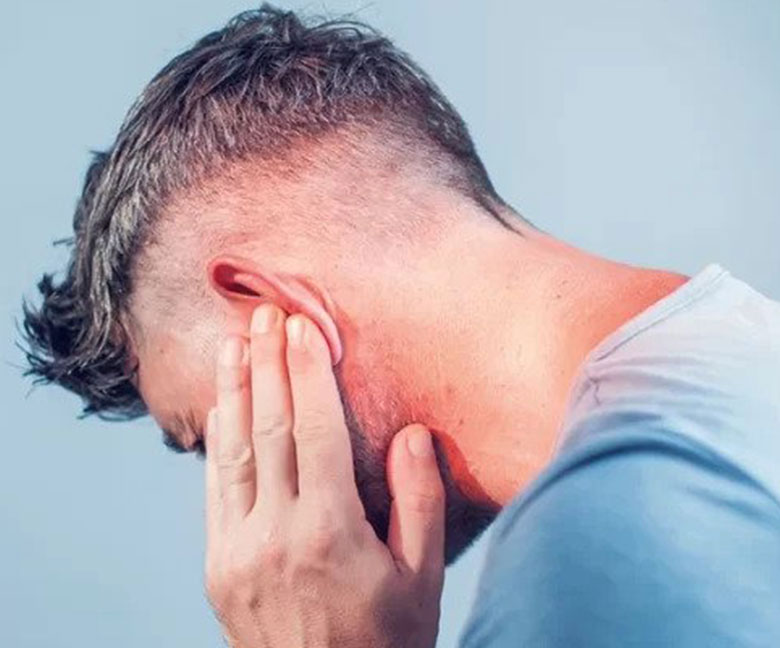Over time, exposure to sound that reaches 85 decibels or higher can cause hearing loss and problems like tinnitus. That’s the equivalent of a loud concert or fireworks display.
The best way to protect your hearing is to avoid loud noises and, when possible, move away from the source. But when that’s not possible, hearing protectors such as earplugs or ear muffs can help.
Avoid Loud Noises
Loud sounds can damage the sensitive structures inside your ears, which can lead to permanent hearing loss and other problems like tinnitus (a ringing in the ear that won’t go away). The good news is that noise-induced hearing loss is preventable. The key is to avoid loud noises whenever possible and use earplugs or earmuffs when you can’t.
There are several ways to tell if the sounds around you are too loud. One way is to use a noise meter app on your smartphone. Another way is to simply pay attention to your body: if you are straining to hear friends 3 feet away, if you can’t talk over the sound without raising your voice, or if your ears feel ringing after leaving an event, it’s probably too loud and you should move elsewhere or use earplugs.
Over time, listening to any sound that’s 85 decibels or higher can cause hearing loss and other problems like tinnitus. To protect your hearing, listen to music at a level no louder than 50 to 60% of its maximum volume, and take listening breaks every hour or so. You can also try using over-the-ear headphones, which create a tighter seal to block out ambient sounds.
Impulse noise, such as gunfire or fireworks, can be very damaging to your hearing because it lasts only a fraction of a second and is so intense. Even if you only experience impulse noise once, it can cause irreversible hearing loss.
To protect your hearing, always wear earplugs when attending concerts and sporting events, and when working with power tools like lawn mowers. When choosing earplugs, make sure they have a high rating of noise reduction so you can still enjoy music and speech at a safe volume. If you have difficulty finding earplugs that fit comfortably, a professional audiologist can provide custom-fit earplugs to reduce your exposure to sound.

Wear Earplugs or Ear Muffs
The best way to protect your hearing is to avoid loud noises or move away from them, but when this isn’t possible, earplugs or ear muffles can help. The devices reduce the intensity of sound that enters your ears, protecting against noise-induced hearing loss and tinnitus (ringing, buzzing or roaring in the ear). To get the most benefit from hearing protection, wear it consistently, inspect it regularly and replace the cushions on reusable earplugs at least once a month.
Earplugs fit into the ear canal to block out sound waves, and come in many forms, including foam, plastic or rubber. When choosing earplugs, look for a comfortable fit with a snug seal in the ear canal. Gently roll the earplug between your fingers into a thin tube shape before inserting it, taking care not to create tunnels for sound to enter. If you’re having trouble getting a proper seal, gently pull the top of your ear up and back with your opposite hand to straighten your ear canal. Repeat these steps with the other ear, making sure that both fit comfortably and securely.
Both earplugs and ear muffles have a Noise Reduction Rating (NRR) that indicates how much they reduce noise levels. The higher the NRR, the more effective the ear protection is. Earplugs tend to have a lower NRR than ear muffs and are ideal for situations where portability and discretion are a priority.
However, workers may find earplugs uncomfortable or difficult to insert correctly, and they require careful handling to prevent infections. Additionally, they aren’t appropriate for all environments and should be used in conjunction with other personal protective equipment (PPE) such as hard hats. For environments where communication is a key requirement, electronic ear muffs that use Bluetooth and microphones can be helpful to allow users to communicate while wearing ear protection.
Practice Responsible Listening Habits
While certain work environments and recreational activities expose individuals to high levels of noise, safe listening habits can limit the risk. In addition to protecting your ears, practicing responsible listening can also promote healthy ear health for those around you.
When you listen to music, podcasts or videos, use the 60/60 rule – never listening at more than 60% of your device’s maximum volume for more than 60 minutes at a time. Use headphones that offer excellent sound quality and block out external noise to maximize your listening enjoyment. And be sure to take regular breaks from your favorite tunes to give your ears a rest.
The inner ear is filled with tiny hair cells called stereocilia, which convert soundwaves into electrical energy that is sent to the brain to be interpreted as sound. Damage to these cells can result in irreversible hearing loss. Even sounds that aren’t particularly loud — such as the hum of a lawnmower or the chatter of birds — can lead to permanent hearing loss when exposed to them for extended periods.
When working in an environment with potentially damaging noise levels, wear ear protection and take frequent breaks from the noise. Also consider using quiet appliances at home and choosing ones with low noise ratings to reduce household noise levels.
Active listening is a communication technique that involves the intentional use of nonverbal cues to convey your attention and empathy with another person’s perspective. While some common active listening techniques include asking open-ended questions, paraphrasing and summarizing what the speaker has said, and exhibiting patience and eye contact, your most important responsibility as an active listener is to refrain from offering unsolicited advice or solutions.
Hearing is precious and irreplaceable, so it’s vital that you protect it. By avoiding dangerously loud noises, using proper ear protection and practicing responsible listening habits, you can ensure your hearing stays healthy for years to come. For more expert guidance on your individual hearing protection needs, visit an audiologist in your area. They can offer a variety of options tailored to your lifestyle and help you enjoy all the sounds of summer — safely!
See Your Provider Regularly
It’s important to take preventive measures when it comes to hearing health. By limiting time spent in loud environments and by using proper protective devices, you can significantly reduce your risk for hearing loss or other ear diseases.
Regular exposure to loud sounds can damage sensitive structures in your inner ears, leading to noise-induced hearing loss and tinnitus. Often, the damage is permanent. The best way to protect your hearing is to avoid loud sounds or move away from them, but if this isn’t possible, you can use hearing protection such as earplugs or earmuffs to filter out extreme noises and reduce your risk for injury.
It’s important to choose earplugs or earmuffs that are the right size and shape for your ears, so they form an airtight seal. They should also fit well against your face so they don’t shift during use, which can lead to discomfort and decreased effectiveness.
